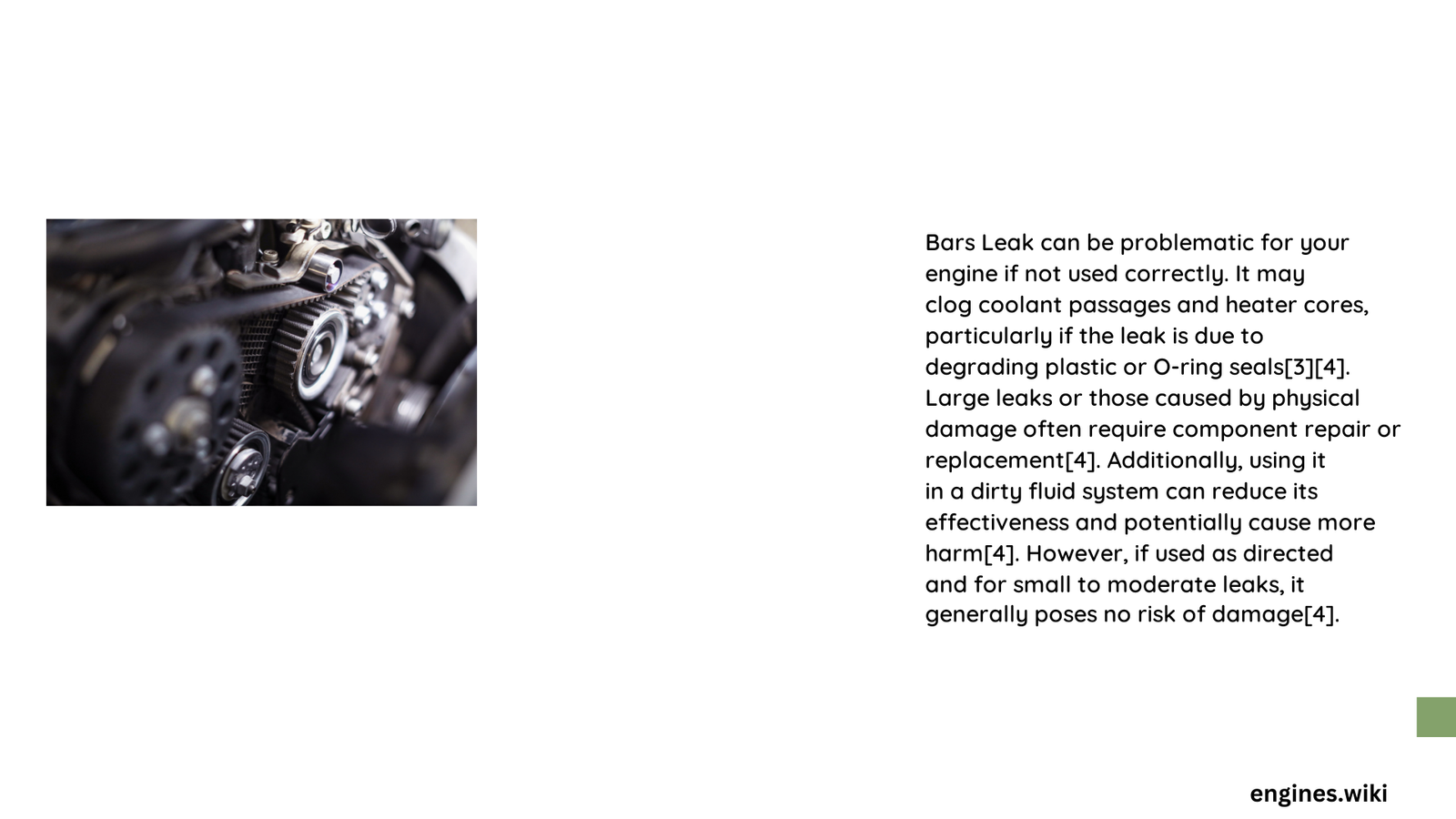Bars Leak can potentially compromise your engine’s integrity by causing unexpected complications in the cooling system. While designed as a quick fix for minor coolant leaks, this product carries significant risks including potential clogging of critical cooling passages, reduced coolant flow, and accelerated component wear. Vehicle owners must carefully evaluate the potential long-term consequences before applying this stop-leak solution to their engine.
What Makes Bars Leak Potentially Harmful?
Bars Leak presents several critical risks to engine performance and longevity:
Can Bars Leak Damage Cooling System Components?
Bars Leak can potentially cause substantial damage to your engine’s cooling infrastructure through multiple mechanisms:
- Passage Blockage:
- Sealant particles may accumulate in radiator and heater core channels
- Reduced coolant circulation increases engine temperature risks
-
Potential for complete cooling system obstruction
-
Material Interaction:
- Chemical composition might react negatively with engine materials
- Potential degradation of rubber seals and gaskets
- Risk of accelerated corrosion in aluminum components
How Effective is Bars Leak in Resolving Leaks?
| Leak Type | Bars Leak Effectiveness | Recommended Action |
|---|---|---|
| Micro Leaks | High | Potentially Suitable |
| Small Leaks | Moderate | Conditional Use |
| Large Leaks | Low | Professional Repair |
What Are the Warning Signs of Potential Damage?
Vehicle owners should monitor these critical indicators after Bars Leak application:
- Unusual cooling system performance
- Persistent overheating
- Reduced coolant circulation
- Unusual noise from water pump
- Visible residue in coolant system
When Should You Avoid Using Bars Leak?
Critical Scenarios Requiring Professional Intervention:
– Significant coolant system damage
– Turbocharged or high-performance engines
– Vehicles under manufacturer’s warranty
– Complex cooling system architectures
Expert Recommendations for Safe Usage
To minimize potential risks when using Bars Leak:
- Thoroughly flush cooling system before application
- Follow manufacturer’s instructions precisely
- Use only for minor, verified leaks
- Consider professional diagnostic assessment
- Monitor engine performance closely after application
Alternative Solutions to Engine Leak Repair
- Professional coolant system repair
- Specialized automotive sealants
- Component replacement
- Comprehensive cooling system maintenance
Cost-Benefit Analysis
Potential Expenses:
– Bars Leak: $10-$25
– Professional Leak Repair: $150-$800
– Potential Engine Damage: $1,500-$4,000
Technical Insights
Bars Leak operates through microscopic ceramic and copper particles that temporarily seal small gaps. However, these particles can potentially create long-term complications by:
– Accumulating in narrow passages
– Interfering with precise mechanical tolerances
– Potentially causing unpredictable chemical interactions
Final Technical Assessment

While Bars Leak offers a temporary solution for minor coolant leaks, its potential for causing systemic engine damage outweighs short-term benefits. Professional mechanics consistently recommend targeted repairs over universal stop-leak products.
Recommended Best Practices
- Prioritize professional diagnostic evaluation
- Maintain regular cooling system maintenance
- Address leaks through precise, manufacturer-recommended methods
- Consider long-term engine health over immediate cost savings
References:
– Bar’s Leaks Official Website
– Automotive Cooling System Maintenance Guide
– Professional Mechanic Insights on Stop Leak Products
